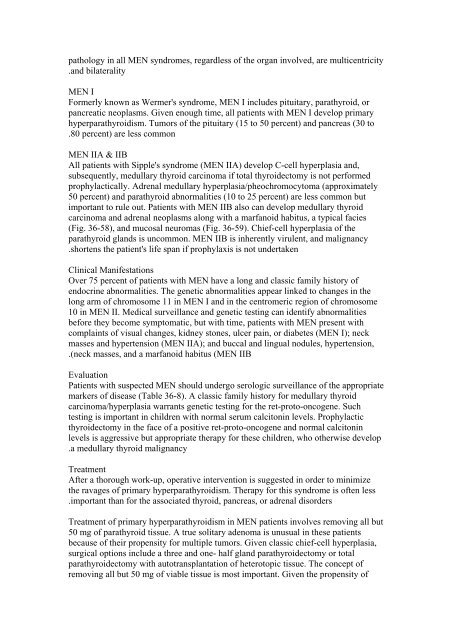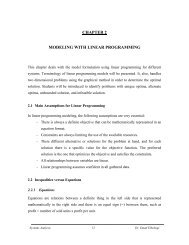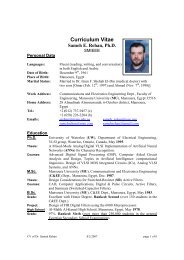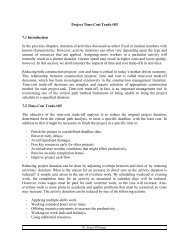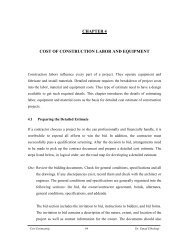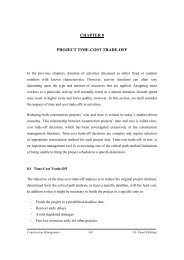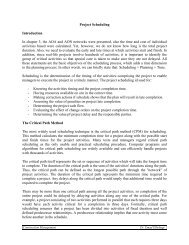Thyroid and Parathyroid
Thyroid and Parathyroid
Thyroid and Parathyroid
Create successful ePaper yourself
Turn your PDF publications into a flip-book with our unique Google optimized e-Paper software.
pathology in all MEN syndromes, regardless of the organ involved, are multicentricity<br />
. <strong>and</strong> bilaterality<br />
MEN I<br />
Formerly known as Wermer's syndrome, MEN I includes pituitary, parathyroid, or<br />
pancreatic neoplasms. Given enough time, all patients with MEN I develop primary<br />
hyperparathyroidism. Tumors of the pituitary (15 to 50 percent) <strong>and</strong> pancreas (30 to<br />
. 80 percent) are less common<br />
MEN IIA & IIB<br />
All patients with Sipple's syndrome (MEN IIA) develop C-cell hyperplasia <strong>and</strong>,<br />
subsequently, medullary thyroid carcinoma if total thyroidectomy is not performed<br />
prophylactically. Adrenal medullary hyperplasia/pheochromocytoma (approximately<br />
50 percent) <strong>and</strong> parathyroid abnormalities (10 to 25 percent) are less common but<br />
important to rule out. Patients with MEN IIB also can develop medullary thyroid<br />
carcinoma <strong>and</strong> adrenal neoplasms along with a marfanoid habitus, a typical facies<br />
(Fig. 36-58), <strong>and</strong> mucosal neuromas (Fig. 36-59). Chief-cell hyperplasia of the<br />
parathyroid gl<strong>and</strong>s is uncommon. MEN IIB is inherently virulent, <strong>and</strong> malignancy<br />
. shortens the patient's life span if prophylaxis is not undertaken<br />
Clinical Manifestations<br />
Over 75 percent of patients with MEN have a long <strong>and</strong> classic family history of<br />
endocrine abnormalities. The genetic abnormalities appear linked to changes in the<br />
long arm of chromosome 11 in MEN I <strong>and</strong> in the centromeric region of chromosome<br />
10 in MEN II. Medical surveillance <strong>and</strong> genetic testing can identify abnormalities<br />
before they become symptomatic, but with time, patients with MEN present with<br />
complaints of visual changes, kidney stones, ulcer pain, or diabetes (MEN I); neck<br />
masses <strong>and</strong> hypertension (MEN IIA); <strong>and</strong> buccal <strong>and</strong> lingual nodules, hypertension,<br />
.( neck masses, <strong>and</strong> a marfanoid habitus (MEN IIB<br />
Evaluation<br />
Patients with suspected MEN should undergo serologic surveillance of the appropriate<br />
markers of disease (Table 36-8). A classic family history for medullary thyroid<br />
carcinoma/hyperplasia warrants genetic testing for the ret-proto-oncogene. Such<br />
testing is important in children with normal serum calcitonin levels. Prophylactic<br />
thyroidectomy in the face of a positive ret-proto-oncogene <strong>and</strong> normal calcitonin<br />
levels is aggressive but appropriate therapy for these children, who otherwise develop<br />
. a medullary thyroid malignancy<br />
Treatment<br />
After a thorough work-up, operative intervention is suggested in order to minimize<br />
the ravages of primary hyperparathyroidism. Therapy for this syndrome is often less<br />
. important than for the associated thyroid, pancreas, or adrenal disorders<br />
Treatment of primary hyperparathyroidism in MEN patients involves removing all but<br />
50 mg of parathyroid tissue. A true solitary adenoma is unusual in these patients<br />
because of their propensity for multiple tumors. Given classic chief-cell hyperplasia,<br />
surgical options include a three <strong>and</strong> one- half gl<strong>and</strong> parathyroidectomy or total<br />
parathyroidectomy with autotransplantation of heterotopic tissue. The concept of<br />
removing all but 50 mg of viable tissue is most important. Given the propensity of


